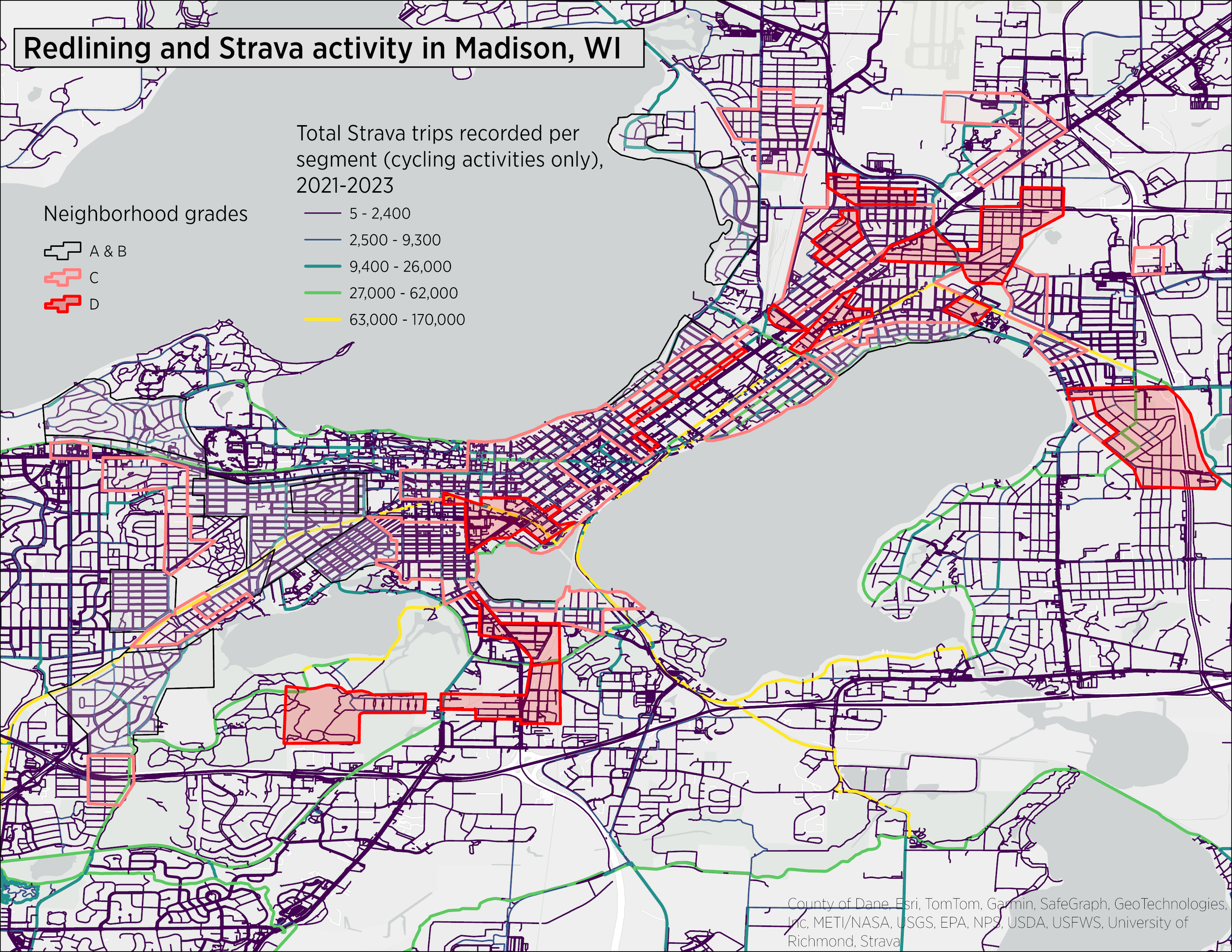In her book Runnning While Black, Alison Mariella Désir explores the hidden ways that the design of cities and environments determines who can be physically active. She writes: “A runner is somebody with secure housing, a safe place to train, running infrastructure—parks, paths, trails, well-kept sidewalks—clean air, and the physical, emotional, and psychological safety to run. And the majority of people with those privileges are white, just as it was during the running boom. Said simply: your zip code determines not only your health, longevity, safety, and comfort, it also determines who has the freedom to easily run.”
Drawing from Alison Mariella Désir’s work, this project will look at how historical redlining and structurally racist investment or divestment in neighborhoods affects engagement in exercise and active transportation. Because there are so many factors involved, we will access a wide variety of data sets, including data from HOLC maps, deprivation index data, Heat index data, and others, comparing them against available movement data courtesy of Strava and parks and recreation offices.
We hope that our work will not only make clear the way that historical and current structural policies impact people’s abilities to access exercise but also inspire dedicated action to undo and remake/redesign neighborhoods in ways that will create the proper conditions for marginalized communities to live active lives.

